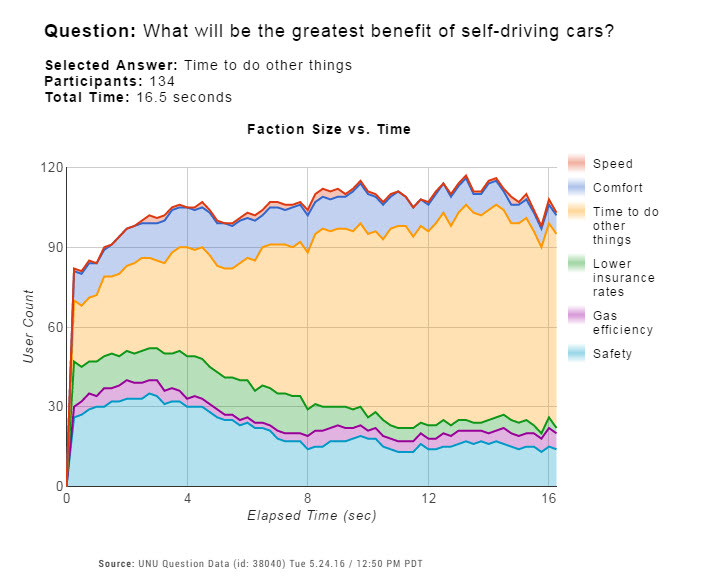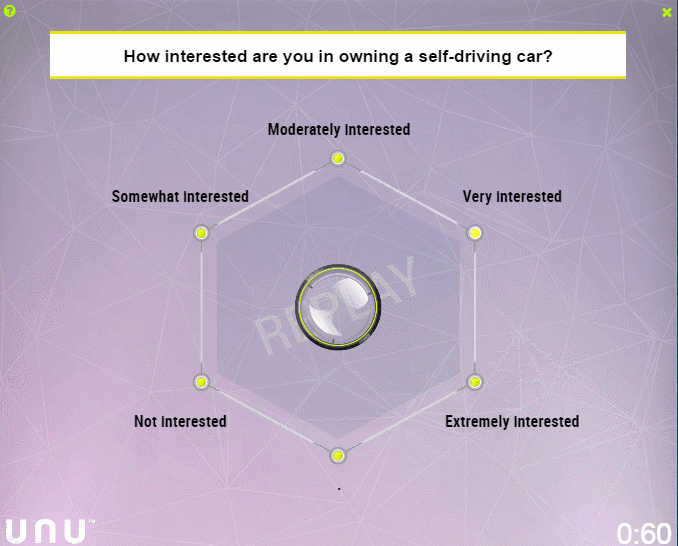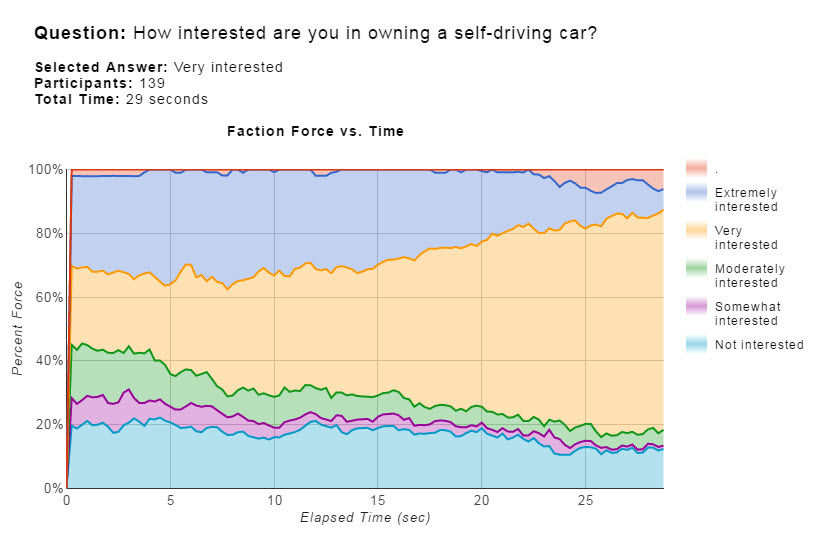Self-driving cars used to feel like a sign of our space-age future. But, when it comes to ride-sharing companies like Uber and Lyft, the future is now. A pilot program rolling out in Pittsburgh has renewed public interest in this remarkable technology and ignited a debate about life without drivers. Uber drivers in Pittsburgh have reacted to the rapid rise of self-driving cars with a mixture of surprise and sadness. But, while it’s easy to sympathize with those livelihood will be threatened, researchers at Unanimous AI wanted to see what the public at large thought about the driver-less future.
To find out, researchers convened a group of potential customers for Uber’s new self-driving cars using Swarm Intelligence to captures the group’s collective perspective. Analysis of the swarm’s response on a variety of different questions revealed surprising insights into how the average consumer feels about Uber’s most recent innovation. First, the researchers asked – Would you feel safe riding in an Uber driverless car?
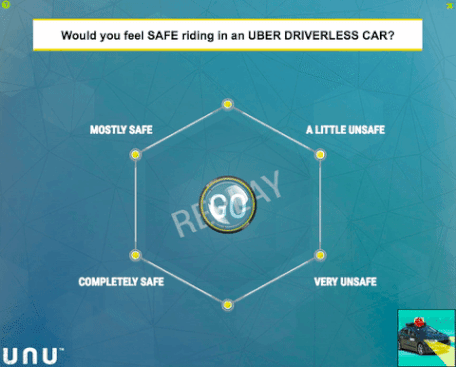
As you can see, the swarm converge on “a little unsafe,” which seems to reflect the public’s uneasiness with the concept of self-driving cars despite the fact that they are described as “ridiculously safe” in objective third-party studies. With that in mind, it makes sense to wonder if the ideal configuration for a self-driving car might be one that retains the steering wheel, and thus the possibility of a human overriding the technology. Researchers put that question to the swarm intelligence:
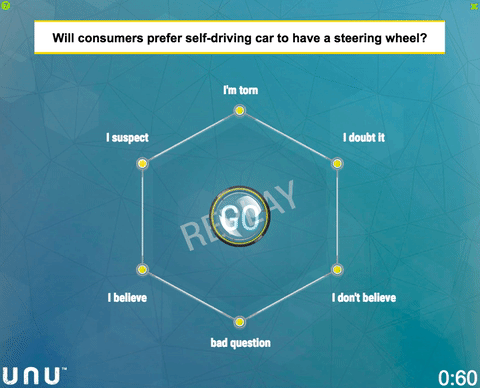
As shown above, the result reveals public suspicion that the self-driving car with steering wheel might just be the ideal compromise. Still, despite the concerns, the swarm also revealed that the public sees some very compelling benefits, as well. In a era where free time is fast becoming the ultimate luxury, it might just be that the most useful side-effect of self-driving cars is regaining the time lost behind the wheel.
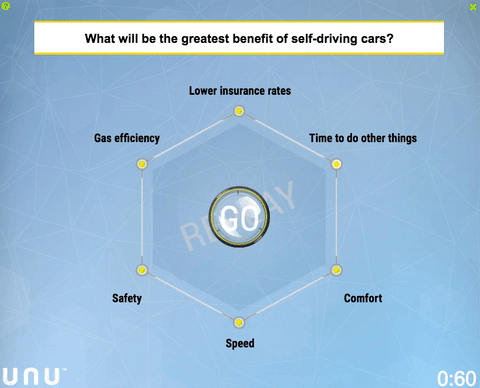
The real-time swarming data above can be plotted over time using Faction Analysis techniques. The graph below shows how factions form and dissolve over time, resulting in a strong consensus around the option “time to do other things”.
Finally, the researchers looked beyond self-driving cars as a means of transportation and asked for consumer reaction to automated delivery of products. Many companies are currently exploring such methods – including Domino’s, which is field testing an automated pizza delivery robot in Australia. The question researchers wanted to know is – will this make people want to buy more pizza?

Perhaps unsurprisingly, a pizza delivery robot future has a bright future. And, given the speed and conviction with which the swarm converged on its opinion, Clinton and Trump might want to consider adding this particular innovation to their “get out the vote” efforts come November.
Finally, researchers asked what might be the most important question of all, when predicting the future of self-driving cars. How interested would you be in owning one yourself? After all, unless there is a strong appetite for premium cars, the technology will not take off quickly. The good news for the self-driving industry, however, is shown in the data below:
Clearly there significant enthusiasm around self-driving cars for individual purchase, for use in taxi services, and for use in delivery services. The only question is, how quickly can it get deployed while meeting the safety standards of local governments.
Swarms are forming daily to explore topics of every kind. If you’d like to try swarming for yourself – it’s fun, free, and totally anonymous. Simply click HERE.

